Source: DODO Research
The Ethereum ecosystem, which has been weak for a long time, is finally about to usher in a new wave of narratives. In addition to the DenCun upgrade that benefits many L2s, the staking The trend became the focus of the Ethereum ecosystem as EigenLayer opened to increase the LST mortgage amount at the end of last year. EigenLayer attracted more than 500,000 $ETH in just one month. TVL exceeded 1 billion US dollars and now reaches 1.4 billion US dollars. It is the current Ethereum TVL's 12th-ranked king-level project, and the first AVS to use EigenLayer verification service - EigenDA is about to go online. The narrative of the DA service has also become a topic of market attention with the skyrocketing of Celestia's token $TIA, and EigenLayer not only protects itself, At the same time, it also brings a new track Liquid Restaking Defi (LRD)/ Liquid Restaking Token (LRT) liquidity re-pledge service. As the name suggests, the LRD project is to release the LST (stETH, stETH, swETH, ETHx) liquidity helps users release liquidity by issuing mortgage receipt tokens (LRT), forming a new round of token nesting dolls.
Today Dr. DODO will take you to understand which projects in the Liquid Restaking service are worthy of your participation. This article will focus on four products that have been launched but have not yet issued coins. in projects.
What is Restaking?
Dr.DODO introduced EigenLayer and its Restaking concept to you as early as half a year ago. In simple terms That is to say, it will give you an extra layer of income from the Ethereum pledged in the POS.
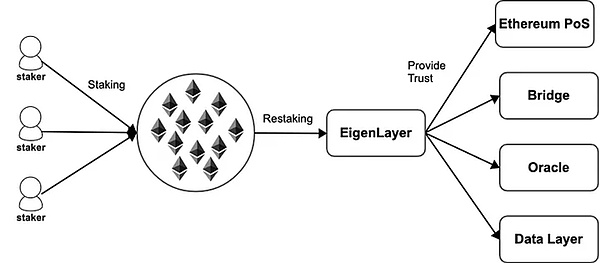
After understanding EigenLayer, let’s explain Restaking For the derivatives project under the narrative, you can have a good understanding of the four types of Restaking by citing the picture of Delphi Digital:
LSD Restaking:Deposit the LST (stETH, swETH, etc.) you get after depositing into the LSD protocol into EigenLayer and then stake it.
Liquid-LSD Restaking: Through LRD protocols such as KelpDAO, LST is entrusted to the LRD protocol and is deposited into EigenLayer and then pledged by the protocol, and Users receive the Liquid Restaking Token (LRT), a mortgage certificate token.
Native Restaking: Native restaking means that stakers operating native nodes can also provide ETH to EigenLayer for restaking.
Liquid Native Restaking: Native liquid restaking refers to projects such as etherf.fi or Puffer Finance that provide small-amount ETH node services. Provide the ETH in the node to EigenLayer and then stake it.

KelpDAO
KelpDAO is a Restaking ecological project made by the LSD project Stader Lab. As mentioned above, it belongs to the Liquid-LSD Restaking type. It is currently open to deposit Lido’s stETH and Stader’s ETHx, two LST tokens. , however, since the current EigenLayer LST quota is full, deposits are currently suspended. In addition, the official has also made it clear that users who deposit into KeplDAO will be able to receive EigenLayer point rewards. The current protocol TVL exceeds 160M, making it the project with the highest TVL in the LRT field.
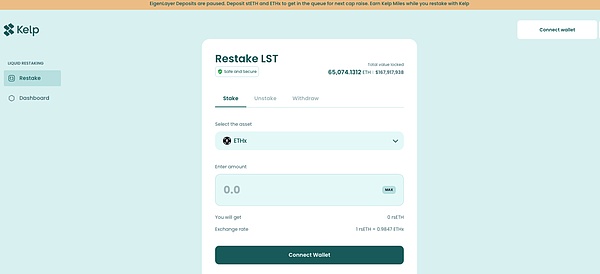
Source: kelpdao.xyz/retake
Renzo
< p>Renzo is different from KelpDAO but is a Liquid Native Restaking type product, which means that it is not restricted by the EigenLayer LST deposit limit and is
still able to deposit, but it should be noted that the ETH deposited into Renzo is currently There is no open redemption for the time being, and the mortgage certificate ezETH cannot be transferred. It is locked in the short term. The same team as KelpDAO also said that users will be able to obtain EigenLayer points. The current team background or financing information has not been disclosed. Early projects need to pay attention to risks.
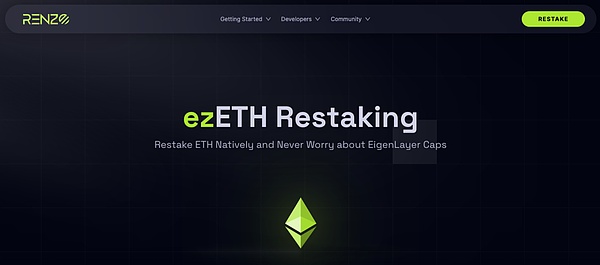
Source: https://www.renzoprotocol.com/#what-is-renzo
Swell
Swell Network is a well-established LSD protocol. This time it has officially announced that it will enter the field of Liquid Restaking. It is also a Liquid Native Restaking type product and will not be affected by EigenLayer LST. Due to the quota limit, Swell's unissued currency has airdrop expectations, so its LST token swETH has been favored by many airdrop hunters and is currently the second largest pledged asset in EigenLayer.
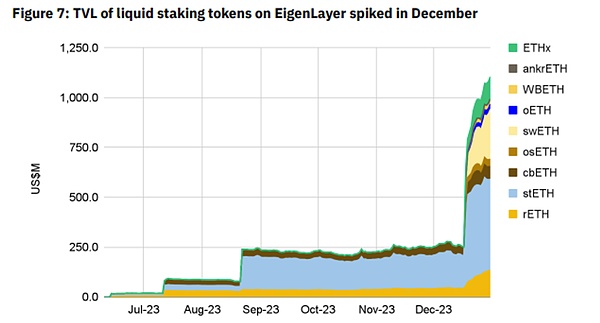
Source: Binance Research https://public.bnbstatic.com/static/files/research/monthly-market-insights-2024-01< br>
Currently, only part of the LSD product is open for staking. Deposit ETH to obtain swETH tokens, while Liquid Native Restaking product pledges ETH to obtain rswETH. It is not yet open.
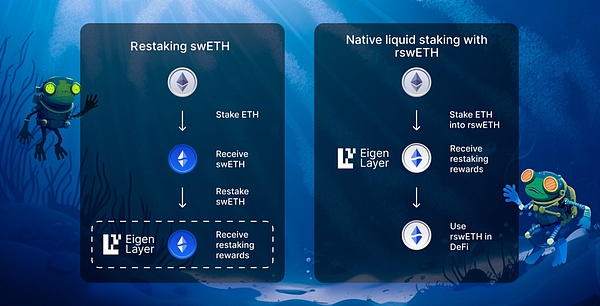
Source: https://x.com/swellnetworkio/status/1743204726777450672?s=20
< h2>
ether.fiether.fi is the same as the above two projects. It is also a Liquid Native Restaking type product and has received 5.3 million investment from BitMEX founder Arthur Hayes. U.S. dollar seed round financing. Unlike LIDO, ether.fi adopts a decentralized, non-custodial approach to realize the pledge of ETH, and announced the provision of re-pledge services. Since it is native ETH re-pledge, it is not subject to EigenLayer LST The limit effect can still be deposited, and its mortgage certificate token eETH (wrapped token weETH) is also one of the few liquid LRT mortgage certificate tokens at present.
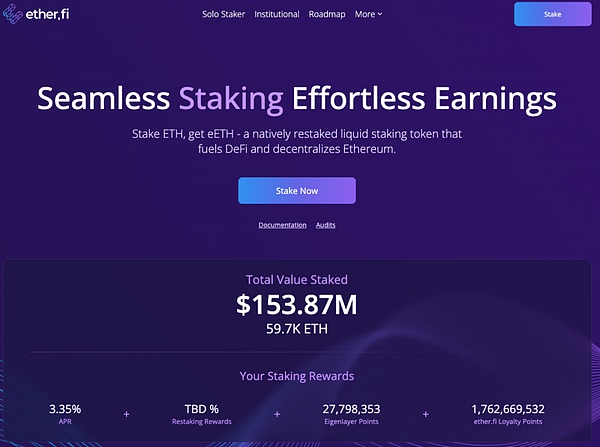
Source: https://www.ether.fi/
Author’s opinion
The author believes that after the official launch of the Bitcoin spot ETF in 2024 Q1, the Ethereum ecosystem is expected to rebound, and the three major narratives will be the main theme of the Ethereum ecosystem. The first is the direct benefit of the Cancun upgrade to Ethereum The second layer of ecology is the EigenLayer re-staking ecology introduced today, the third is the Web3 application project (games, payments, etc.) for Mass Adoption, and the Liquid Restaking project introduced today is the most popular one participating in the EigenLayer re-staking track. A cost-effective way, you only need to deposit ETH into the relevant agreement to participate in the multi-year plan.
In addition to the four projects introduced above, there are currently many others in preparation. For example, Puffer Finance, which Dr. DODO also introduced previously, also recently announced that it will participate in re-staking, but because its products have not yet Since it is online, I will not introduce it in this article, but you can also always pay attention to other projects on this track and participate moderately with controllable risks. You may be able to make profits when waiting for the relevant protocol to issue coins.
 JinseFinance
JinseFinance









